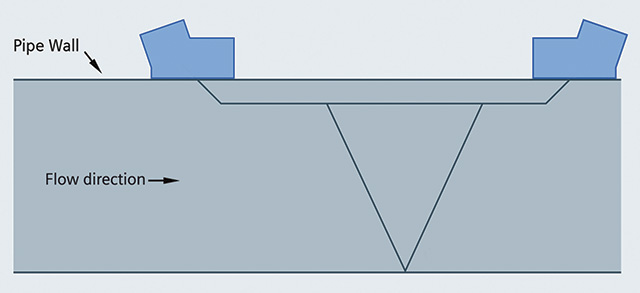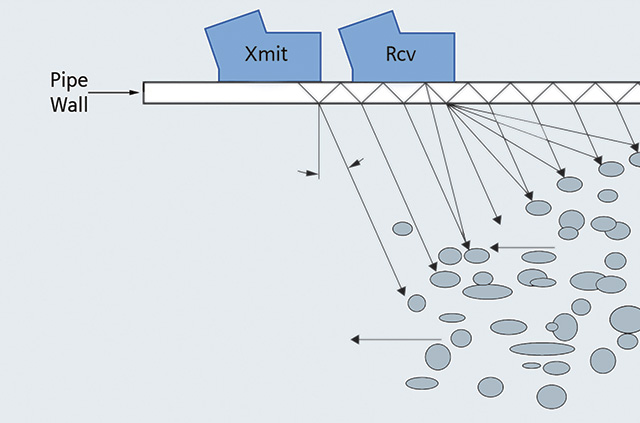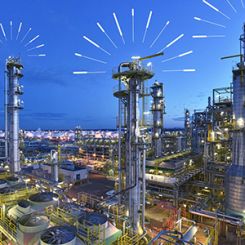A wastewater treatment plant is designed to protect the community it serves. However, if the complex process of removing harmful substances from wastewater is not carefully managed, the plant may not be able to fulfill its purpose. Monitoring the flow of influent (incoming domestic, commercial or industrial wastewater) and effluent (treated water that is discharged or repurposed) is crucial for remaining in compliance with increasingly strict legislation that holds treatment facilities accountable for their impact on public and environmental health. Several flow technologies can measure wastewater as it advances through the treatment process, but clamp-on ultrasonic flow offers a combination of benefits that should not be overlooked. A properly outfitted clamp-on flow meter is suitable for most wastewater applications. It performs more accurately than a traditional mechanical meter and is often more cost-effective than an electromagnetic or inline ultrasonic meter.
Different Methods of Measurement
A clamp-on ultrasonic flow meter consists of at least two sensors mounted externally to a pipe. The sensors measure flow by transmitting and receiving ultrasonic signals directly through the pipe wall and the medium, but the method in which the flow rate is determined varies depending on the nature of the application. Transit-time measurement calculates the difference in arrival time between sound waves traveling in the same direction as flow and those traveling against it (see Figure 1). This difference is directly proportional to the mean flow velocity of the medium. Transit-time is the preferred mode of operation for relatively homogeneous liquids and is highly accurate—generally up to 0.5 percent of flow. Figure 1. Transit-time measurement (Graphics courtesy of Siemens Process Industries and Drives)
Figure 1. Transit-time measurement (Graphics courtesy of Siemens Process Industries and Drives) Figure 2. Doppler measurement
Figure 2. Doppler measurementAccurate and Versatile Transit-Time
Clamp-on flow technology is sometimes perceived as a poor choice for wastewater treatment applications because of the misconception that transit-time meters can only measure liquids devoid of any particles or bubbles, leaving lower-accuracy Doppler meters as the sole clamp-on option for most wastewater applications. In reality, a high-quality transit-time meter is capable of tolerating a sizeable amount of solids without any compromise in performance. The maximum concentration depends on which type of sensor is used:- Shear mode or narrow beam. A transmitting shear mode sensor injects an acoustic signal into the pipe wall, through the flowing liquid and directly into the receiving sensor. When fitted with shear mode sensors, a transit-time meter will generally retain its accuracy level with a total solids content of up to 7 percent.
- Lamb wave or wide beam. Lamb wave sensors operate by broadcasting a variety of frequencies through the pipe to determine which most closely resembles the pipe wall. The matching frequency is then transmitted into the liquid with the pipe wall serving as a waveguide, allowing a broader swath of ultrasonic energy to cross the pipe and increasing the probability of a strong signal during times of high particle content. The wider beam produced by this method results in a solids tolerance of up to 15 percent.
- raw sewage
- primary sludge
- return- and waste-activated sludge (RAS and WAS)
- mixed liquor
- chemical additives
- effluent

